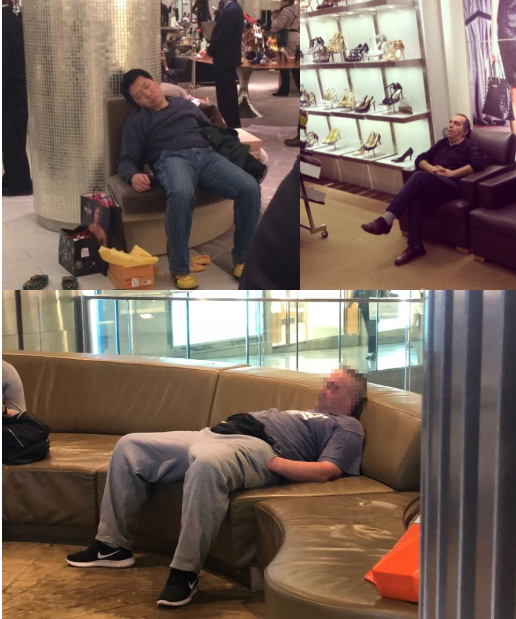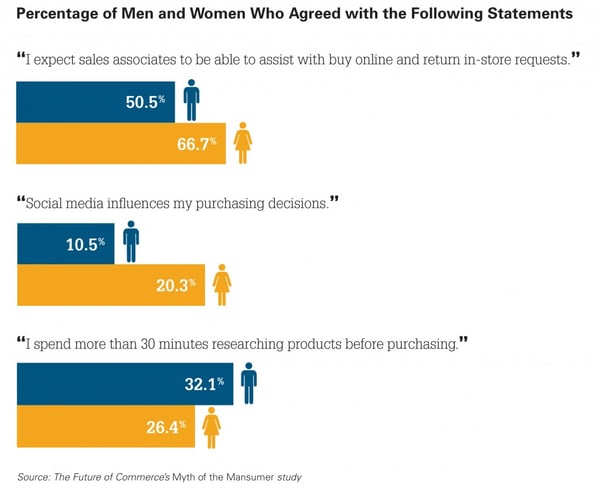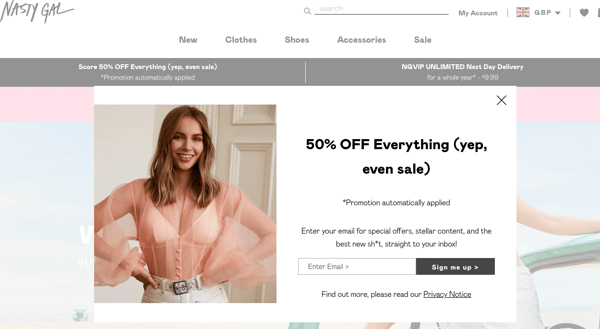It may come as no surprise that men and women tend to shop very differently. But how exactly?
It may come as no surprise that men and women tend to shop very differently. But how exactly?

It may come as no surprise that men and women tend to shop very differently. But how exactly?
In John Gray’s famous book “Men Are From Mars, Women Are From Venus”, he makes the point that the “two sexes differ in their perspectives, motives, rationales, and actions.” We are going to explore this idea with regards to the online shopping behaviors of men and women.
We don’t seek to make sweeping generalizations that paint a whole gender in one way or another.
We seek instead to present a range of research explaining how differently a large proportion of men and women behave when buying online. The hope is that you can apply this to improve your own customer centricity.
Even more than this, we seek to present counterpoints to demonstrate how “gender-specific” behaviors are not always gender-specific. There is never a case where all men or all women behave in a specific way in all circumstances.
There is no clear black or white distinction between men and women, and there exists shades of grey (grey, not Gray) in between.
Here's what we'll cover:
1. Men shop on mobile devices more than women
2. Women research and comparison shop online more than men
3. Women are more influenced by social media and reviews than men
4. Women explore and men are goal-oriented
5. Women are more deal driven when shopping online
So check out the most striking differences below, in no particular order, backed by research from different experiments, with actionable examples on how to leverage these for your eCommerce marketing strategy.

Research conducted by BI Intelligence found that although women typically control approximately 80% of household spending in the US, men drive nearly as much online spending as women.
BI also found that in the US in 2014, 57% of women made a purchase online, whereas 43% of men did. So, there is indeed a small difference, yet it is far less significant than many may have assumed it to be.
Most interesting of all is that when referencing a study conducted by SeeWhy, BI Intelligence reported that 22% of men made a purchase on their smartphones whereas that figure was only 18% for women.
So it’s clear that although more women overall made a purchase online, men drove more sales from smartphone devices than women.
BI Intelligence’s research is supported by a study completed by Ecommerce-Platforms.com which broke down mobile commerce usage by gender across a range of different product categories:
Electronics purchased via a smartphone:
Food and drink purchased via a smartphone:
Movie and event tickets purchased via a smartphone:
Digital content purchased via a smartphone:
We can see that, according to the research and in all instances, men made a higher proportion of purchases from smartphones than women did.
However, it is worth noting that the study did not cover typically female-orientated product categories like cosmetics or fashion. Similarly, to counter this study is First Insight’s 2018 survey which sampled people from the UK and revealed that 40% of women frequently shop on mobile devices, compared to 22% of men.
If you are operating within the UK, therefore, these figures may be worth noting. In general in the UK, Real Business reported that women spend 460 million pounds a week on online purchases (with clothing the most popular bought item, a category not accounted for above).
Marti Barletta, president of The TrendSight Group, posits that men would much rather buy a “workable product,” whilst women would rather continue shopping in the hope of finding the “perfect solution.”
Here we have the explore vs. solution (reiterated later on) model that can be supported by some biology:
Women's and men’s brains are structurally different

This is eloquently rearticulated in a piece in the Journal of Decision Making entitled Men Buy Women Shop. After conducting research with 250 respondents the article states that,
“Women tend to be more astute consumers than men, simply because they are willing to invest the time and energy necessary to research and compare products.”
However, there is research from other sources that somewhat conflicts with the above assertions. For example, research from Inmoment found that “males and females differ in how they utilize a product page.”
And more specifically that, “males intensely research the page, viewing all the product details and pictures, while women quickly scan the product page and go to the next product they want.”
The research continues to say, “54% of males browse online every couple of days for the purpose of shopping research, compared to 47% of women that do.”
Additionally, a survey from Baines & Ernst reveals that 85% of women make compulsive purchases online, which goes against the idea of careful research and controlled emotions when women shop online.
It’s true that research differs because consumer culture is in constant flux.
Fundamentally, however, the female versus the male brain is structurally different, so it is logical to assume that there will be minor habit-driven differences to the way they will shop online.

In a 2015 study by The Future of Commerce, 20% of women are revealed to be more influenced by social media in making purchasing decisions, whereas for men it was only 10.5%.
Influenster indicates that between the ages of 14-18, 78% of women look to social media and 69% of women look to retailer websites to seek reviews when shopping for an item.
77% of women will therefore look to social media reviews to validate buying the product - One positive review could be the only thing standing in between an abandoned cart and a happy shopper.
In the same age bracket, 60% of women’s purchase decision-making is influenced by family and friends, according to research by Marketing Charts.
But that doesn’t mean that men are not influenced by social proof (and as we will see in some cases family and friends as well): In The Future of Commerce results, 82% of both men and women said they used online ratings to make decisions on what product to buy.
Research by customer experience consultancy Empathica, as reported by Practical Ecommerce, found that “men tend to stick to their mission when shopping online,” which is in contrast to women who “expand the undertaking by wandering among products and categories” (explore vs. solution).
Psychological studies have supported the theory that, on the whole, women like to analyze, evaluate and search, whereas men rush to decision-making.
Thus, according to this research, women like to explore web-stores thoroughly whereas men are more goal-oriented (or, psychologically solution-driven) when shopping online.
Of course things are not so clear-cut and well defined. Research by Shoppercentric, a UK-based shopping research company, uncovered that men aged 18-24 “defy most male shopping patterns by browsing — both in retail stores and online — shopping with friends, and rivaling women in the number of impulse purchases.''
And based on this, the research company proposes that the “internet may be altering some hard-wired male behavior.”
This research is particularly useful and enlightening as it shows that although men and women’s online shopping behaviors may be one way among a specific age group, it may be completely different in another age bracket (as has been shown above) or in another country (research above was from the UK – US research may have presented starkly different results).
Thus, the male/female differences in online shopping behavior does not operate in a vacuum. It is often subjected to influence from a range of other demographic factors (country, age, culture).
As reported by Practical Ecommerce, research by Performics found that “47% of women are searching for coupons and promotions as their primary use of social media, compared with 33% of males.”
Further, “a third of female respondents reported having increased the amount of time they dedicate to finding coupons via social media, compared to approximately 20% of men.”
Additionally:
Of course, these figures may account for cultural and gender nuances in Russia and the Philippines, but interestingly goes against the popular theory that suggests women are more designer-conscious than men.
Finally, Practical Ecommerce research also found that women are much more responsive to promotional emails as 14% first were exposed to their most recent online purchase in an email in comparison to 8% of men that did.

However, it’s worth noting that Performics’s research also found that men are “more likely to use deal websites, as 56% of men would use them compared to 41% of women.”
So, even if men are more brand-conscious (which typically could mean they spend more for popular brands), it may be that they are almost as deal-hungry as women but just approach it in a different way.
After reading all the above you are probably wondering - and rightly so - how you can use all this research to improve your eCommerce site's customer centricity based on what appeals to men or appeals to women.
Well, below we are going to cover some actionable insights and takeaways that you can experiment with based on the information above.
We have broken our actionable insights into two paragraphs, by gender, below;

As has been mentioned above, men are often goal-orientated when shopping online. We recommend having prominent “buy now” and/or “add to cart” buttons on product pages. Streamline your website to make it easier to checkout.
Men often research the product page before buying- more so than women- and in some cases will be brand-conscious.
Highlight the brand-worthiness of your products with product tags drawing more attention to the product’s brand and include in your email campaigns detailed information about the product. Personalized communications are key since men tend to make quick decisions.
I know this is something you may come across often, but it can’t be stressed enough. As was shown above, on the whole men buy via smartphones markedly more than women, across a whole range of product and service verticals.

Unlike men who intensely read product pages and spend more time on third-party review sites, women are more likely to seek advice from friends and family via social media.
Additionally, it has been reported that “35% of females are likely to recommend a product or brand to friends or family via social media, compared to 28% of men.”
As was shown above, unlike men who are generally more goal orientated when shopping and stick to their “mission”, women like to explore.
Make it easy and engaging for women to navigate your store. Having “related products” or “recommended products” widgets on the product category and specific product pages encourages women to explore your product range, giving them the opportunity to interact with your brand.
I know this won’t apply to all eCommerce stores, since this varies depending on your sales strategy - coupons/deals/offers may not be a good fit.
But, as was reported above, females are generally more deal-driven when shopping online. Organizing seasonal sales or related coupons (i.e., for Christmas or Valentines Day) may be a good way to engender more female visitors.
We highly recommend providing coupons/deals/offers via your social media channels, which judging by our research is the preferred channel. Further, provide promotional emails! Research by Performics found that 14% of their female respondents first saw their most recent online purchase in an email in comparison to 8% of men.
research by The Future of Commerce has also shown that women are more likely to buy something online and return it in-store. Offering in-store returns online could boost your female customer base.
As mentioned at the start of this article - Nothing universally applies to all men or all women. The most important thing is to collect data from your webshop on your customers to make data-driven decisions when it comes to your approach.
As has been shown, there are certain online shopping behaviors and characteristics that are more common among women than among men, and vice versa, but that in no way means they apply to all men or all women.
Further, as has been shown earlier in this article, there are occasions when even the opposite applies. Prominent research posits that women explore more when online shopping whereas men don’t as they are more goal/task driven.
Despite this, compelling opposing research from Shoppercentric found that a large proportion of men aged 18-24 in the UK possessed typically female online shopping characteristics like browsing, exploring, and impulse purchasing.
Collectively this shows that other demographic factors (i.e. age, country, culture) can play a dramatic role in driving behavior. Similarly, brands shouldn’t focus on masculine identity because millennial men are rejecting rigid male stereotypes.
Instead, you should build relevance, create meaningful one-on-one relationships with the individual customer, trace their shopping personas, and reduce the psychological strain that is experience when shopping online.
Combined with personalized, high-quality shopping experiences, this strategy will lead to greater conversion success starting with optimized customer segmentation.
Looking for more ways to tailor your webshop to your target audience? Check out our trend report!